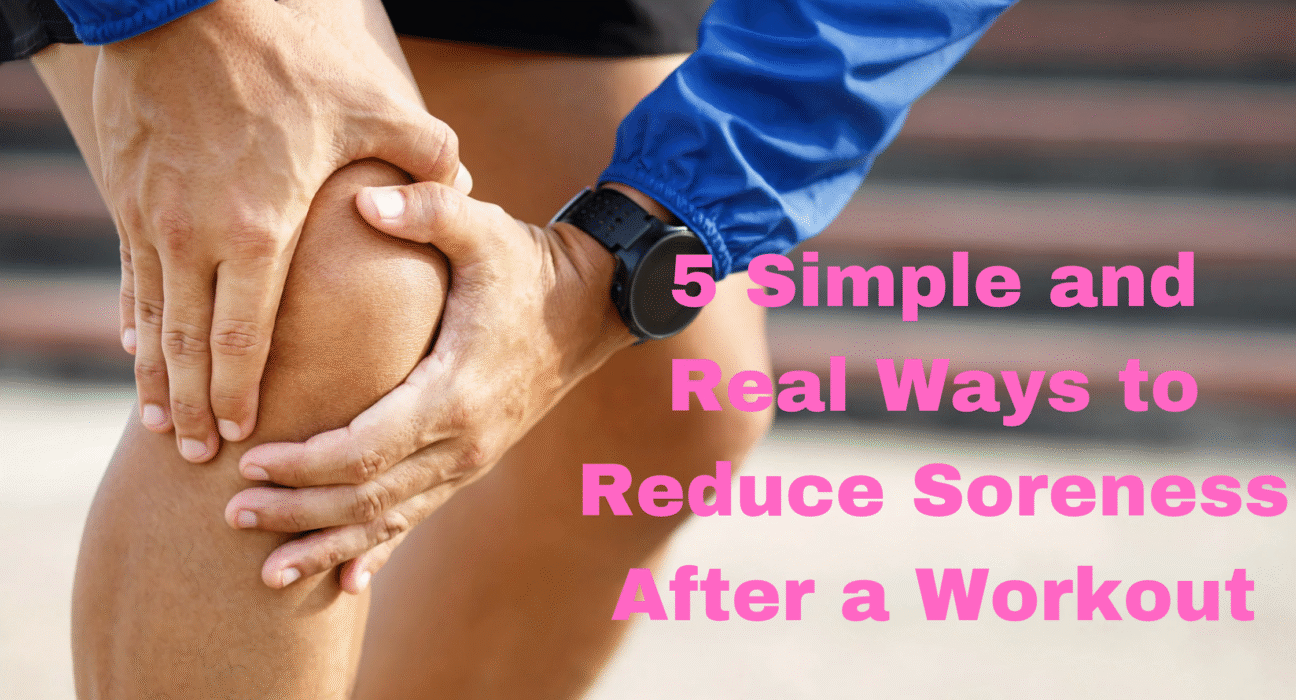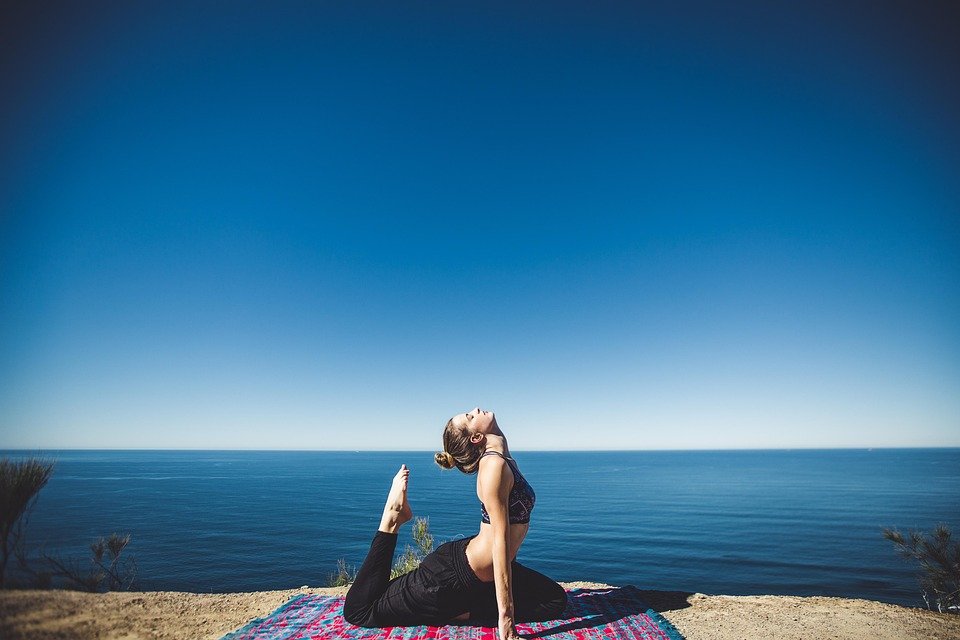Disclaimer: This post contains affiliate links. If you make a purchase through these links, we may earn a small commission at no extra cost to you.
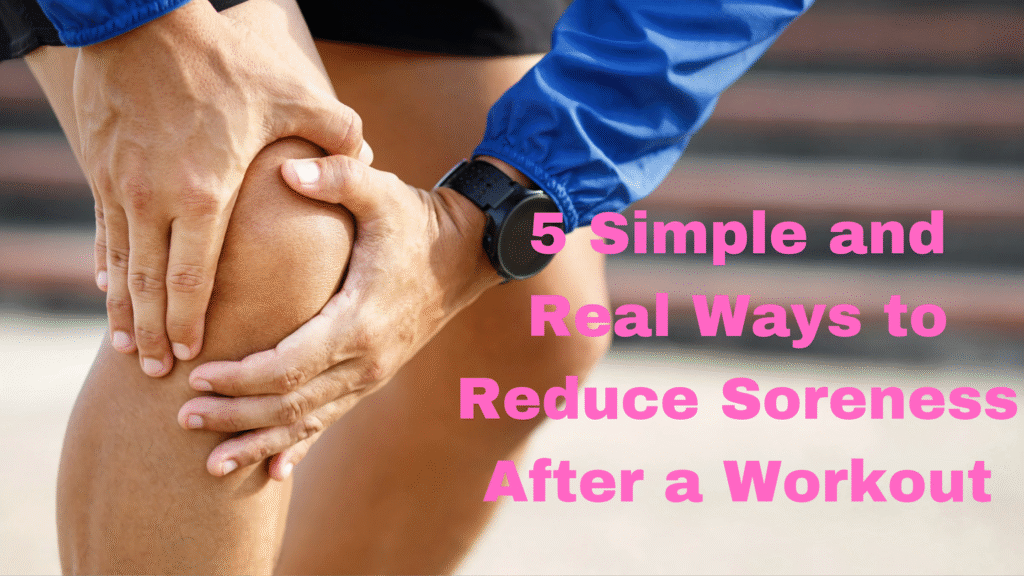
We all like that amazing feeling after completing a good workout session—we feel strong, sweaty, and proud. But then the next day arrives, and boom! Our legs start feeling like jelly, our arms don’t want to move themselves, and even laughing hurts. Well, this is muscle soreness, and it’s a completely normal feeling, especially when you try any new exercise or push yourself harder than daily.
The good news is that now you don’t have to suffer from this. There are some easy things that can help you feel a little better faster and also help you enjoy your workout without getting sore. Let’s dive into 6 simple and useful ways that are used to reduce soreness after doing a workout.
1. Always Cool Down and Stretch Right After Your Workout
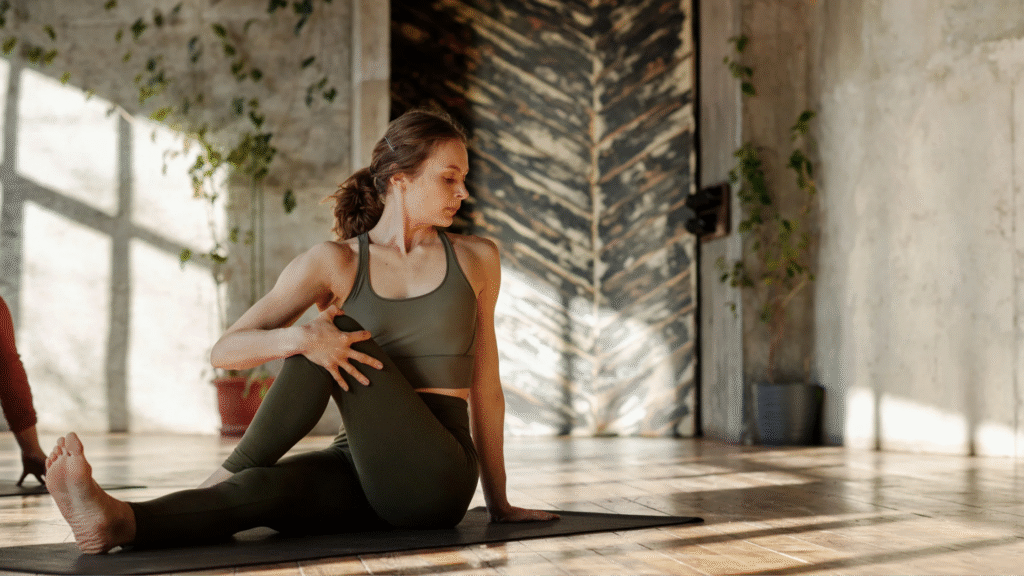
Generally people skip stretching after a workout session, thinking that it doesn’t matter. But honestly, taking just 15 extra minutes to stretch your body after a workout will make a big difference in how sore you’re feeling after the workout.
When you stretch after exercising, you help your muscles relax, loosen up, and also recover better. Also, it helps your blood to stay in movement and clean that tired and heavy feeling from your body.
Here’s what to do:
- After completing your workout, walk slowly or do some light movement for 10 minutes.
- Then go for some basic stretches—reaching to your toes, stretching your arms overhead, and also doing deep lunges.
- Hold every stretch for 30 seconds and keep your focus on your breathing.
Quick tip:
Stretching doesn’t only help your body to feel better, but it also helps your mind to calm down and relax.
2. Drink Water—And Then Drink Some More
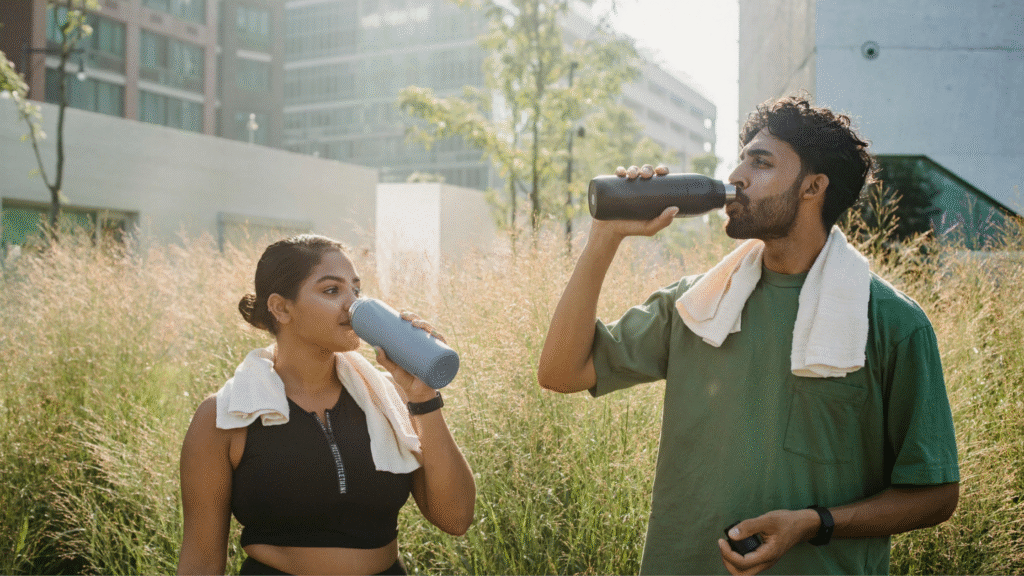
We all know the importance of water, but water is much more important after completing a workout session. When we sweat, we lose fluids and minerals from our body. And if we don’t drink enough water after exercising, our muscles become tight and get sore more easily.
Hydrating helps our body in washing out waste products from our muscles and helps our muscles to recover faster.
Here’s what to do:
- Drink water before exercising, keep taking sips during exercise, and drink more after completing your workout session.
- If you’re sweating too much, then drink coconut water or simply add a pinch of salt and lemon juice to your normal water.
- You should also eat fruits like oranges and watermelons to add extra hydration to your body.
Quick tip:
Always try to keep a reusable water bottle with you all day just as a reminder to drink enough daily.
3. Eat the Right Foods After Working Out
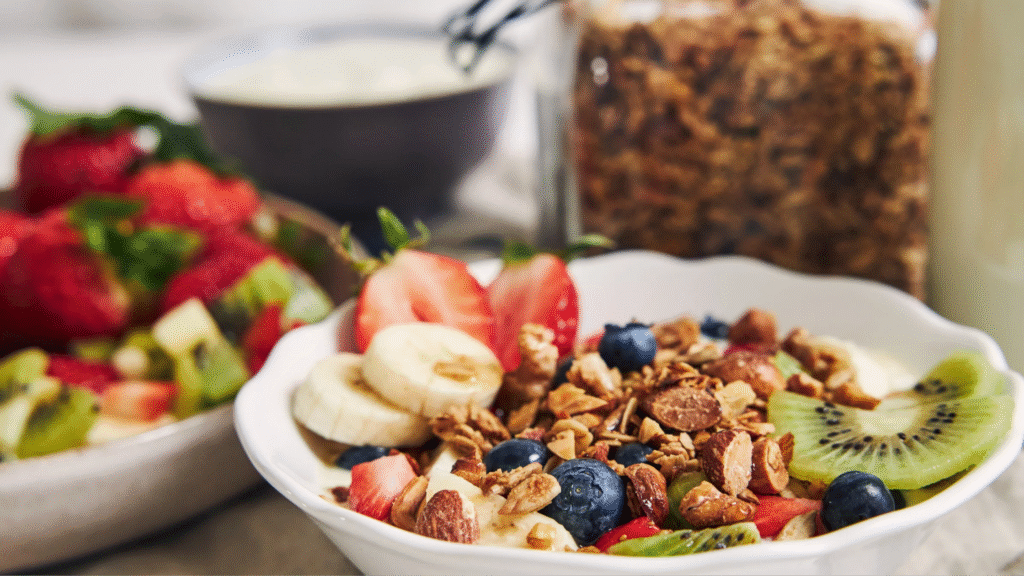
Your muscles face a lot of things while working out. Hence, they crave fuel to heal and grow themselves stronger. And that’s the point where food enters, especially protein and carbs.
Taking the right food after exercising can really reduce the soreness you feel the next day after working out and helps your muscles recover faster.
Here’s what to do:
- Try to eat something healthy within 30 minutes after completing your workout session.
- You can try a protein smoothie, eggs on toast, Greek yogurt with berries and nuts, or grilled chicken with rice, or you can also go for sweet potato.
- Also try to add foods that fight inflammation, like spinach, berries, ginger, and salmon, too.
Quick tip:
If you’re in a hurry, keep a protein bar or protein shake ready. It’s better to eat something little than eating nothing at all.
4. Don’t Just Rest—Move Gently the Next Day

When your muscles are super sore, then crashing on the couch all day feels so good. But you should learn to do some small movements that really help you a lot in feeling better than just being on the couch all day.
Moving helps you in taking the blood flow towards the sore areas and boosts up the healing process.
Here’s what to do:
- Go for a short walk in the garden.
- Practice a soft yoga flow on YouTube.
- Ride a bicycle slowly or even just stretch and foam roll while watching your favorite series or show.
Quick tip:
Don’t keep it heavy or push yourself hard. Post-movement is not another exercise; it’s just some light movements that help your muscles loosen up.
5. Use a Foam Roller or Massage to Ease Muscle Tension
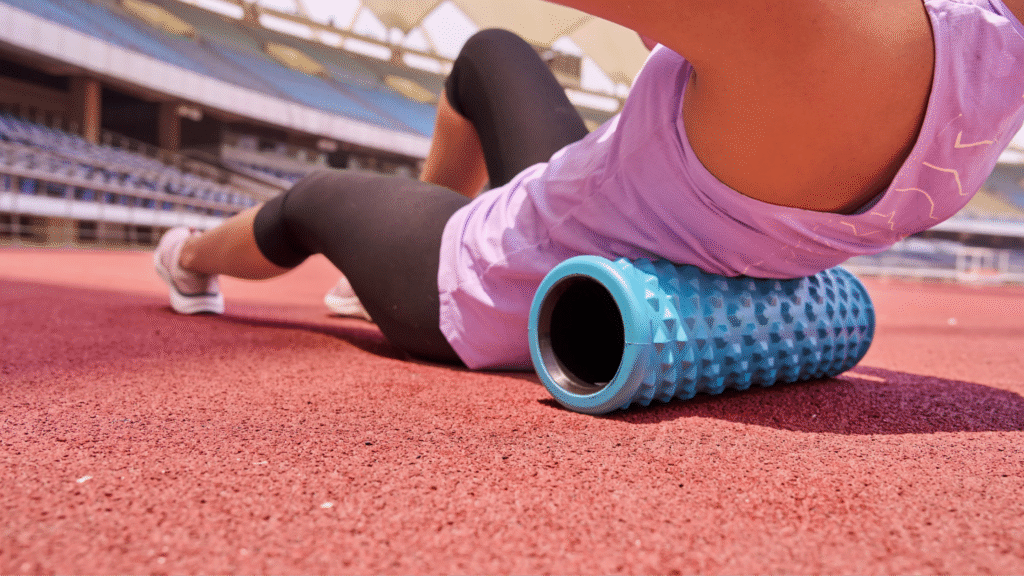
At first impression, foam rolling looks quite weird and painful too. But when you try a few times, you’ll realize how helpful it is. See, foam rolling is just like giving a mini massage to your sore muscles. These rollers also help in getting rid of tight spots and make your recovery faster.
Here’s what to do:
- Roll over the sore parts of your body gradually, usually your legs, glutes, and back.
- Hold the roller on tight, hold, for 30 seconds and take a deep breath.
- You can also sometimes use a massage ball or a rolling pin in a pinch!
Quick tip:
Don’t become hard. Move gradually and be soft towards your body. You can also take help from a massage gun or book a real massage for yourself.
Tired of waking up stiff and sore? This natural supplement helps soothe back and joint pain—so you can move, stretch, and live freely again. 🌿✨
Final thoughts
It’s completely fine to feel soreness after completing your workout, as it’s a sign that your muscles are really adapting, growing, and becoming stronger. But this doesn’t mean that you have to face the pain every time. Just by following some basic habits like staying hydrated, eating healthy foods, stretching your body, and getting good sleep, you can increase the speed of your recovery and also make yourself feel better more quickly.
Always prioritize your body. Listen to what your body is saying and keep giving the care your body deserves. The stronger your recovery will be, the more consistent and motivated you’ll feel. Always be proud of your hard efforts, and let your post-workout session shine on you more brightly.
Don’t forget that progress doesn’t come from hurting yourself; actually, it comes when you start understanding your body and treating it with kindness. Every little step you take in the direction of recovery is a big win in itself. So celebrate your small efforts, have patience during the process, and know that every day you’re getting stronger both mentally and physically.


